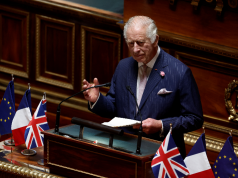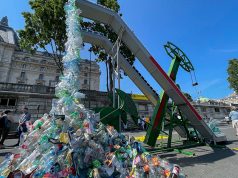The beached whale installation art made by Greenpeace Southeast Asia-Philippines in Cavite won several awards at the Cannes Lions festival in France.
Photos of the grisly installation art depicting a dead whale with a mouth full of plastic waste went viral back in 2017 highlighting the need to address the plastic pollution problem in the Philippines.
An effigy of pollution
The 73-foot long art installation, a collaborative effort between Greenpeace and advertising agency Dentsu Jayme Syfu, brought home the gold and silver lion trophies for outdoor and design respectively.
What a week! @Cannes_Lions #CannesLion2018 @DentsuJaymeSyfu pic.twitter.com/4GEzrwZmMb
— merlee jayme (@mjayme) June 23, 2018
The material used to create the installation was made from plastic waste fished from the ocean.
Greenpeace media planner Anna Carballo Pago in an interview with Adobo Magazine related how her organization immediately grabbed the opportunity to work on the project after being approached by Dentsu.
Pago said the installation art helped Greenpeace and other environmental organization gain headway in their campaigns.
Photos of the disturbing but timely artwork first went viral in May 2017.
The choice of the dead whale to represent the damage caused by plastic pollution was inspired by the 30 cases of beached whales recorded in the first quarter of 2016 alone, according to Greenpeace.
A dead whale found on the beaches of Samal Island in 2016 was found stuffed with waste such as plastic, fish net and hooks, a piece of hard wood with nail, rope and steel wire. The Bureau of Fisheries and Aquatic Resources ruled that the garbage the 38-foot sperm whale ingested was the cause of its demise.
Since the artwork first went viral, other campaigns have been launched to raise awareness on the problem.
In May 2018, National Geographic photographer Randy Olson featured photos taken in various locations in the Philippines on his Instagram account to show the severity of pollution in the Philippines. The photos were part of National Geographic’s “Planet or plastic” initiative.
The Philippines generates at least 40,087.45 tons of garbage per day, with 9, 212.92 tons from Metro Manila alone, according to data from the Senate.
A report released in 2017 by Greenpeace revealed that the Philippines was the third-worst polluter of the world’s oceans, behind China and Indonesia. It also revealed that the Philippines contributed 1.88 million tons of mismanaged plastic waste each year.
According to Greenpeace, pollution due to plastic waste was a common problem in developing countries.










